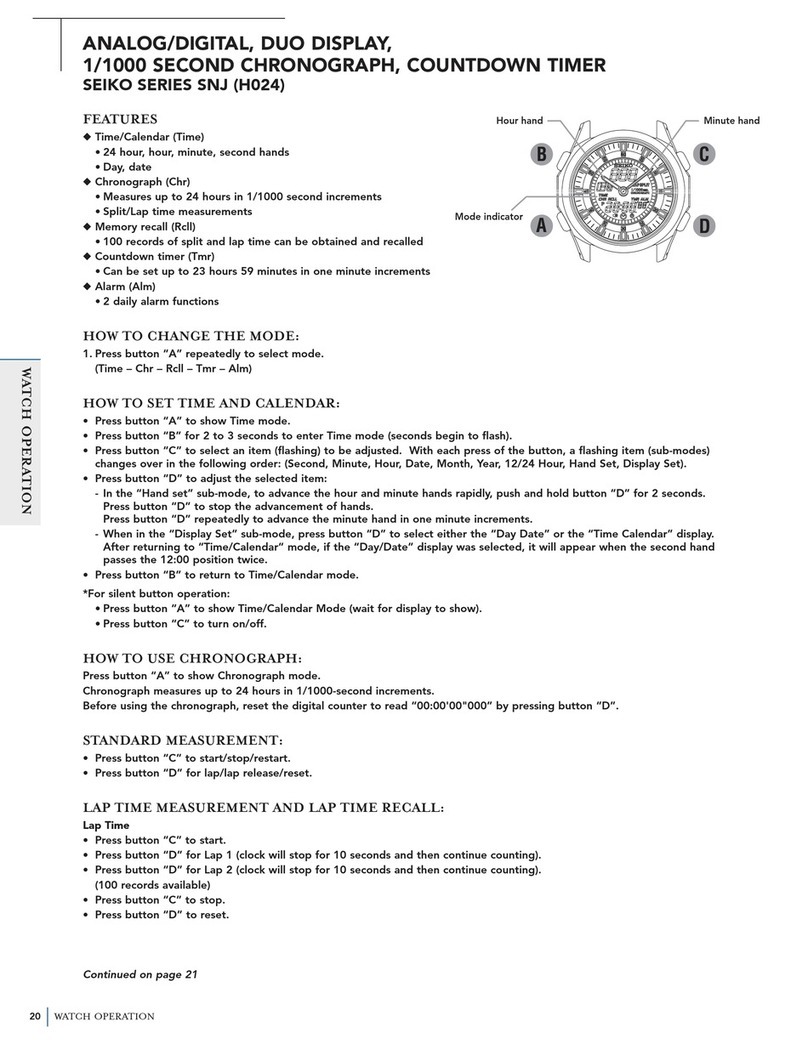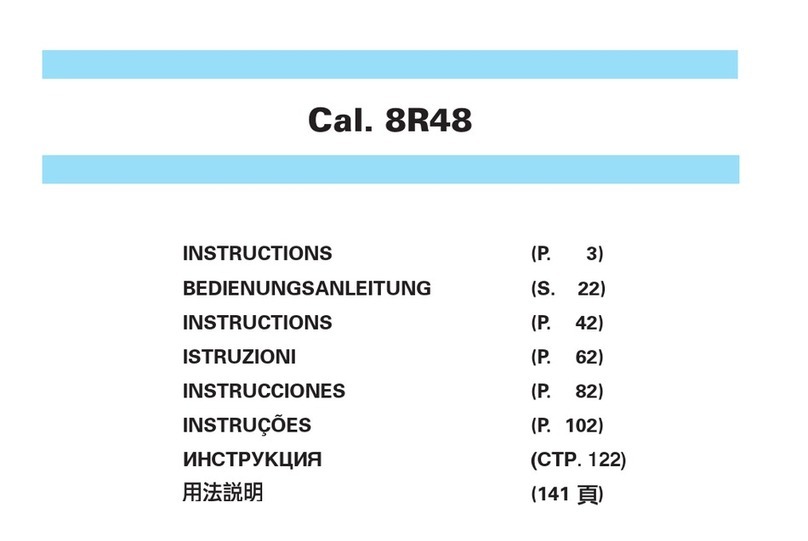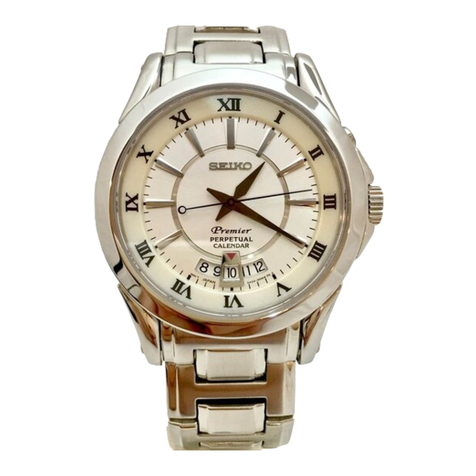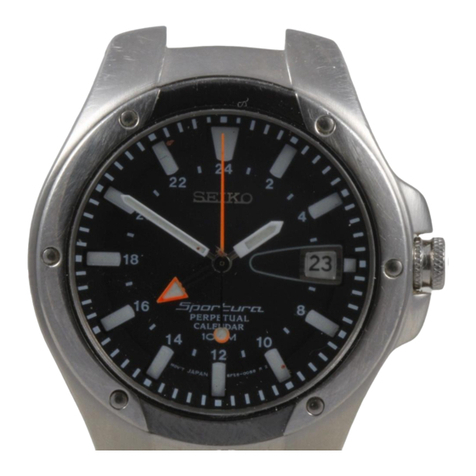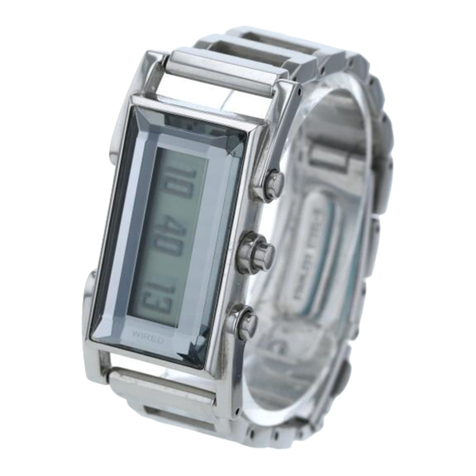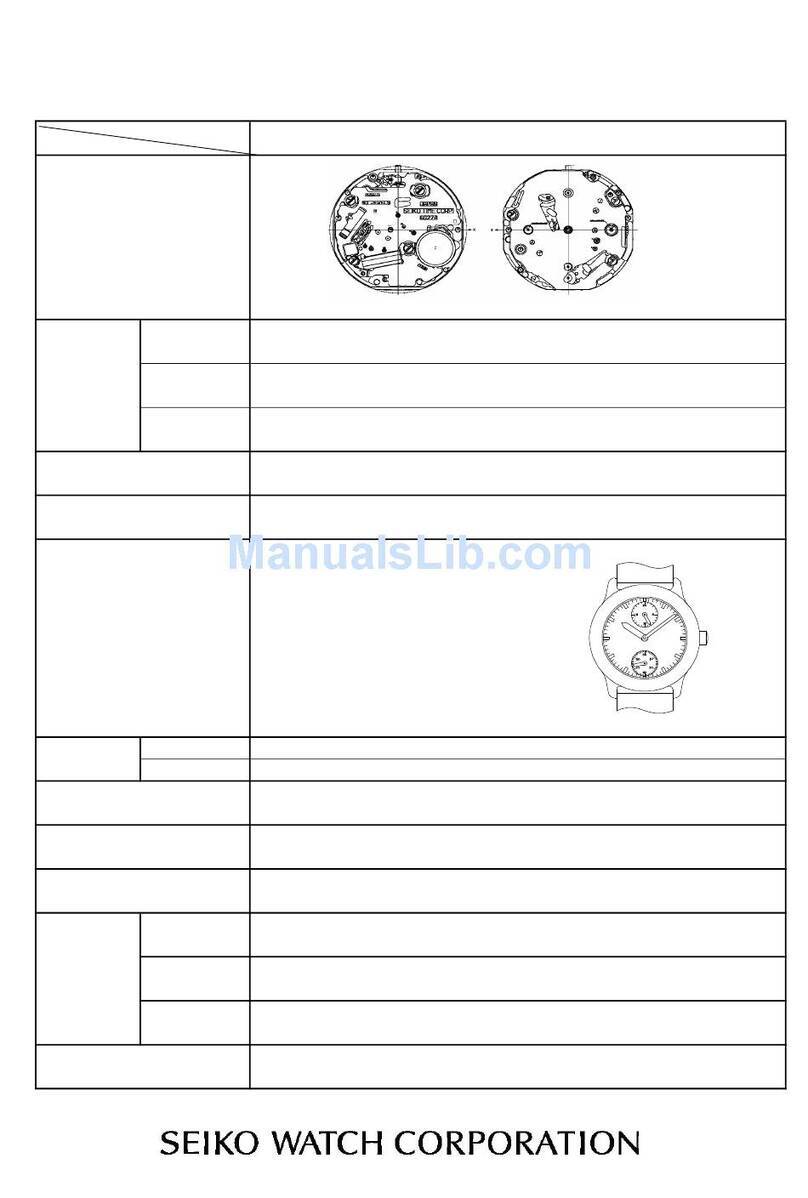Seiko UC-2000 User manual
Other Seiko Watch manuals
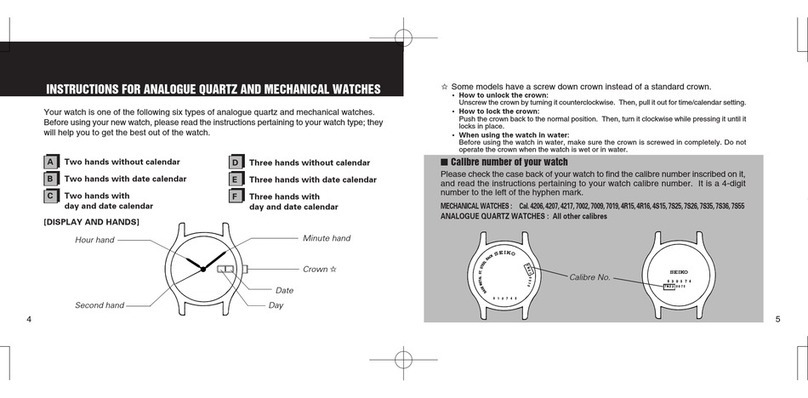
Seiko
Seiko SGED97 User manual

Seiko
Seiko VELATURA 7T62 Operating and maintenance manual

Seiko
Seiko SSA447 User manual
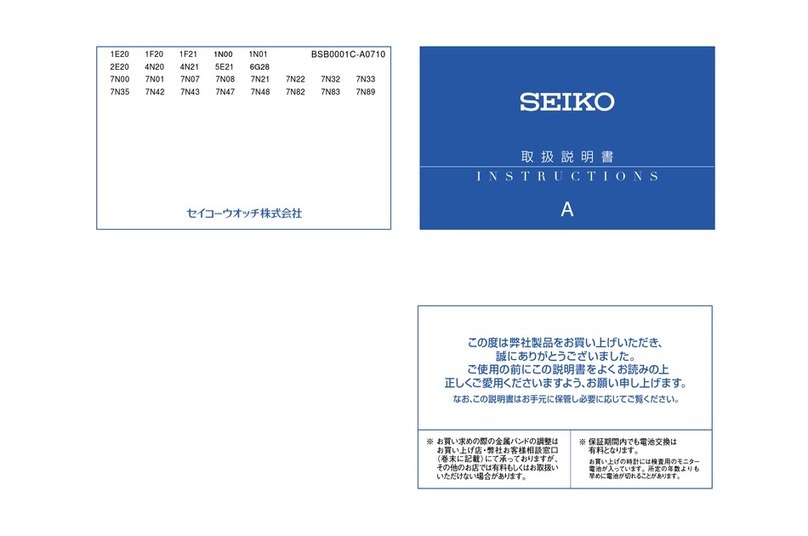
Seiko
Seiko 1E20 User manual
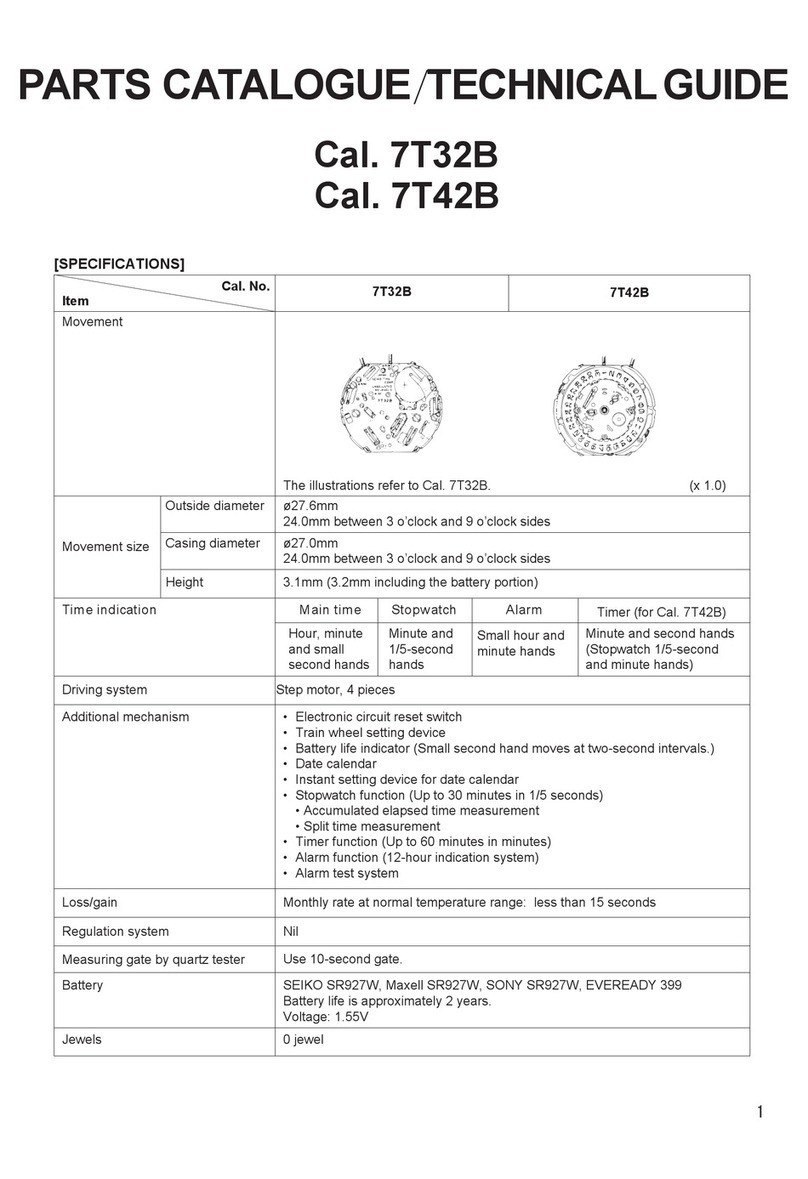
Seiko
Seiko 7T32B Quick start guide

Seiko
Seiko 7T32B Installer manual

Seiko
Seiko ALBA W074 User manual

Seiko
Seiko Cal. V175 User manual
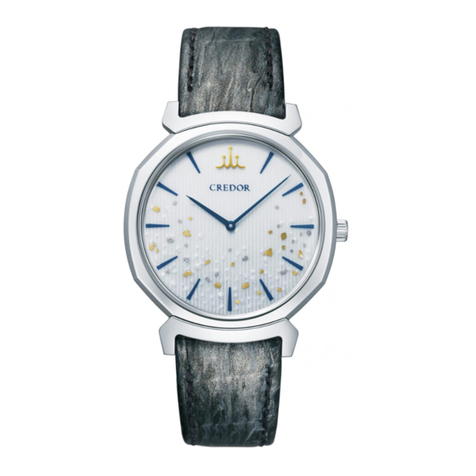
Seiko
Seiko Credor 6870 User manual
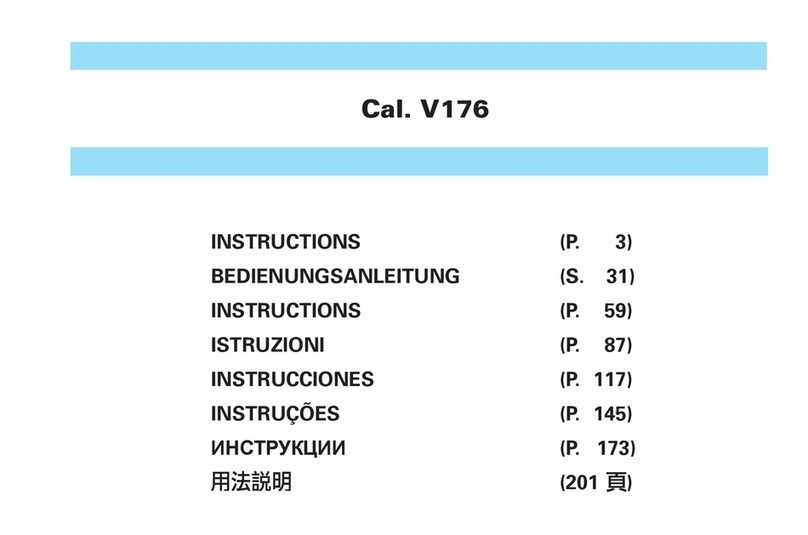
Seiko
Seiko Cal. V17 User manual
Popular Watch manuals by other brands

Casio
Casio QW 5513 Operation guide

Piaget
Piaget 560P Instructions for use

Armitron
Armitron pro sport MD0346 instruction manual

West Marine
West Marine BlackTip 13411293 Instruction Booklet and Care Guide

Jaeger-leCoultre
Jaeger-leCoultre HYBRIS MECHANICA CALIBRE 184 manual

FOREVER
FOREVER iGO PRO JW-200 user manual
